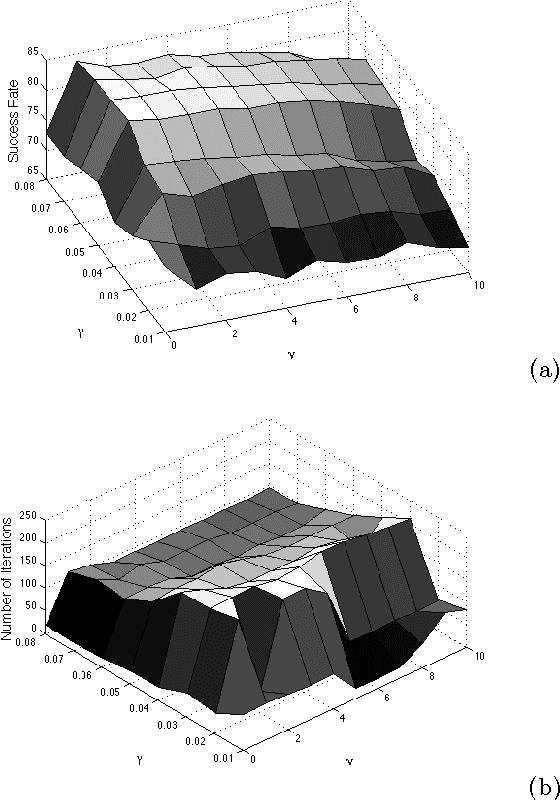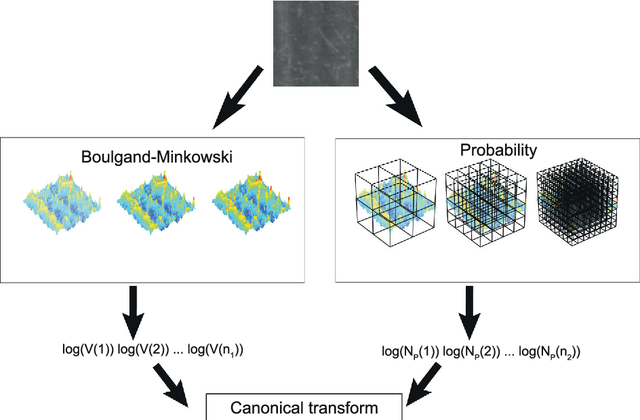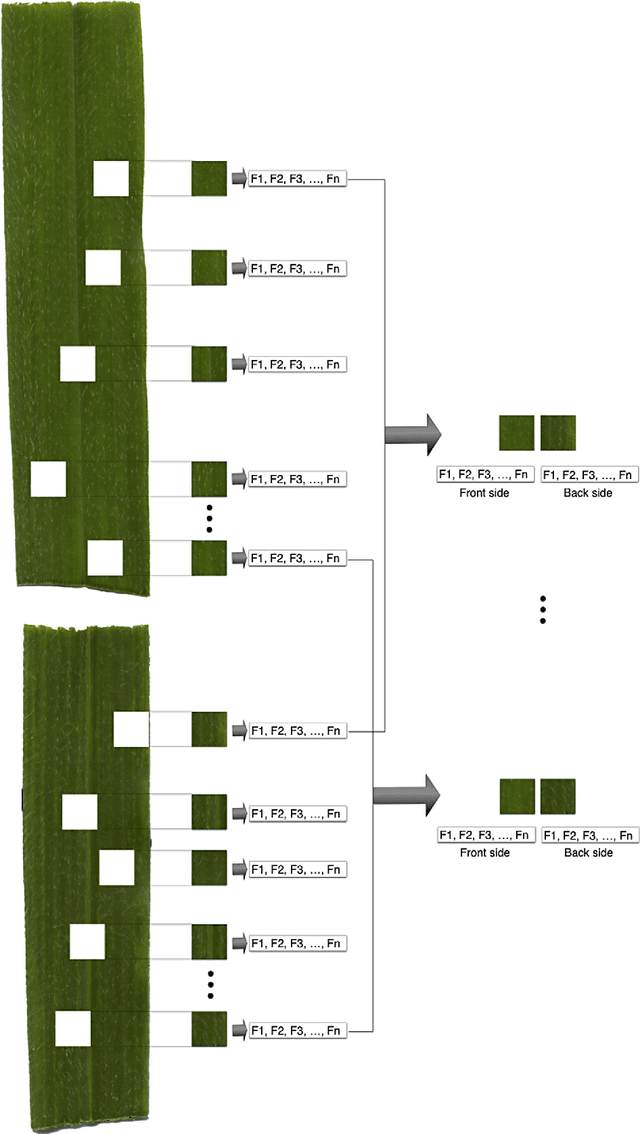Núbia Rosa da Silva
Improved texture image classification through the use of a corrosion-inspired cellular automaton
Dec 26, 2014



Abstract:In this paper, the problem of classifying synthetic and natural texture images is addressed. To tackle this problem, an innovative method is proposed that combines concepts from corrosion modeling and cellular automata to generate a texture descriptor. The core processes of metal (pitting) corrosion are identified and applied to texture images by incorporating the basic mechanisms of corrosion in the transition function of the cellular automaton. The surface morphology of the image is analyzed before and during the application of the transition function of the cellular automaton. In each iteration the cumulative mass of corroded product is obtained to construct each of the attributes of the texture descriptor. In a final step, this texture descriptor is used for image classification by applying Linear Discriminant Analysis. The method was tested on the well-known Brodatz and Vistex databases. In addition, in order to verify the robustness of the method, its invariance to noise and rotation were tested. To that end, different variants of the original two databases were obtained through addition of noise to and rotation of the images. The results showed that the method is effective for texture classification according to the high success rates obtained in all cases. This indicates the potential of employing methods inspired on natural phenomena in other fields.
* 13 pages, 14 figures
Brachiaria species identification using imaging techniques based on fractal descriptors
Dec 25, 2014



Abstract:The use of a rapid and accurate method in diagnosis and classification of species and/or cultivars of forage has practical relevance, scientific and trade in various areas of study. Thus, leaf samples of fodder plant species \textit{Brachiaria} were previously identified, collected and scanned to be treated by means of artificial vision to make the database and be used in subsequent classifications. Forage crops used were: \textit{Brachiaria decumbens} cv. IPEAN; \textit{Brachiaria ruziziensis} Germain \& Evrard; \textit{Brachiaria Brizantha} (Hochst. ex. A. Rich.) Stapf; \textit{Brachiaria arrecta} (Hack.) Stent. and \textit{Brachiaria spp}. The images were analyzed by the fractal descriptors method, where a set of measures are obtained from the values of the fractal dimension at different scales. Therefore such values are used as inputs for a state-of-the-art classifier, the Support Vector Machine, which finally discriminates the images according to the respective species.
* 7 pages, 5 figures
Heterogeneous patterns enhancing static and dynamic texture classification
Apr 16, 2013



Abstract:Some mixtures, such as colloids like milk, blood, and gelatin, have homogeneous appearance when viewed with the naked eye, however, to observe them at the nanoscale is possible to understand the heterogeneity of its components. The same phenomenon can occur in pattern recognition in which it is possible to see heterogeneous patterns in texture images. However, current methods of texture analysis can not adequately describe such heterogeneous patterns. Common methods used by researchers analyse the image information in a global way, taking all its features in an integrated manner. Furthermore, multi-scale analysis verifies the patterns at different scales, but still preserving the homogeneous analysis. On the other hand various methods use textons to represent the texture, breaking texture down into its smallest unit. To tackle this problem, we propose a method to identify texture patterns not small as textons at distinct scales enhancing the separability among different types of texture. We find sub patterns of texture according to the scale and then group similar patterns for a more refined analysis. Tests were performed in four static texture databases and one dynamic one. Results show that our method provides better classification rate compared with conventional approaches both in static and in dynamic texture.
* 6 pages, 5 figures
Analysis of Multi-Scale Fractal Dimension to Classify Human Motion
Jul 06, 2012



Abstract:In recent years there has been considerable interest in human action recognition. Several approaches have been developed in order to enhance the automatic video analysis. Although some developments have been achieved by the computer vision community, the properly classification of human motion is still a hard and challenging task. The objective of this study is to investigate the use of 3D multi-scale fractal dimension to recognize motion patterns in videos. In order to develop a robust strategy for human motion classification, we proposed a method where the Fourier transform is used to calculate the derivative in which all data points are deemed. Our results shown that different accuracy rates can be found for different databases. We believe that in specific applications our results are the first step to develop an automatic monitoring system, which can be applied in security systems, traffic monitoring, biology, physical therapy, cardiovascular disease among many others.
 Add to Chrome
Add to Chrome Add to Firefox
Add to Firefox Add to Edge
Add to Edge